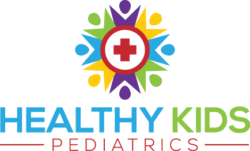CNN International: What do we know about children being more susceptible to this variant, amid reports that hospitalizations for that age group are hitting record highs?
Dr. Jill– At least 7.5 million children in the USA have tested positive to COVID-19. That’s 2.5 million children testing positive as of September 2021 which means roughly 1 in 10. In the past few weeks we’ve seen more covid cases in kids than during the entire pandemic. Covid is outweighing flu, RSV, and the other common cold viruses. Omicron variant is causing both upper and lower respiratory infections; also causing croup (that barky cough children can develop with some viral illnesses). The under 5 year-old population is getting sicker (partly because there is no vaccine for children under 5). Thankfully, even if a child develops a covid infection despite the vaccine, they are likely to have only mild fever and cold symptoms. And, even with the significantly more contagious omicron variant surging, vaccinated kids have the advantage of milder cases.
CNN– More schools are at least starting the new year doing remote learning. Is there with what we know now a safe way to conduct in-person learning?
Dr. Jill: In-person learning is so important for so many reasons including academically, socially, developmentally, and for basic health reasons (meals). In areas of high transmission like the Northeastern USA, health experts and school officials are divided about the kids going back to in-person learning. Parents are also divided; they want to of course all keep their children and elderly or sick family members safe, but they want the children to be in school with their peers. Testing before returning is a pragmatic approach and has its merits for those with access to the test, however, finding ways to get tested can be difficult in some areas. If a test is not available, then it is best to have children stay home if they are sick. Some schools are implementing a “test to stay” policy (exposed children get tested a few times a week to allow them the best chance to stay in school) but, the federal program to give out testing kits may not be ready for several weeks.
CNN: What Advice do you have for parents if they are unsure about vaccinations or concerned about sending their kids back to school?
Dr. Jill: When parents come to me concerned about the vaccine, I remind them that there is no vaccine in history with side effects that were not already known within the first two months of the vaccine being given. Over 8.8 billion doses of covid vaccine have been given worldwide, we know the vaccine is safe and effective. The highest percentage of children hospitalized (almost all as per the AAP) are those who are unvaccinated. The CDC estimates that in the 12-17 year-old population hospitalization rates are 10x higher in those not vaccinated.
The risk of MIS-C is definitely possible weeks to months after an acute covid infection and long term complications can be significant for kids even who had mild or no symptoms; vaccination reduces that risk dramatically. Overall, vaccination is one of the multiple imperfect layers of protection our children have to go back to school as safely as possible. In addition to masks, hand hygiene, and distancing if possible, the things I tell my patients they can always do every day is get plenty of quality sleep at night, choose whole nutritious foods as much as possible, get some intentional movement or exercise in each day, and practice positivity an gratitude to help keep their immune systems functioning well.
